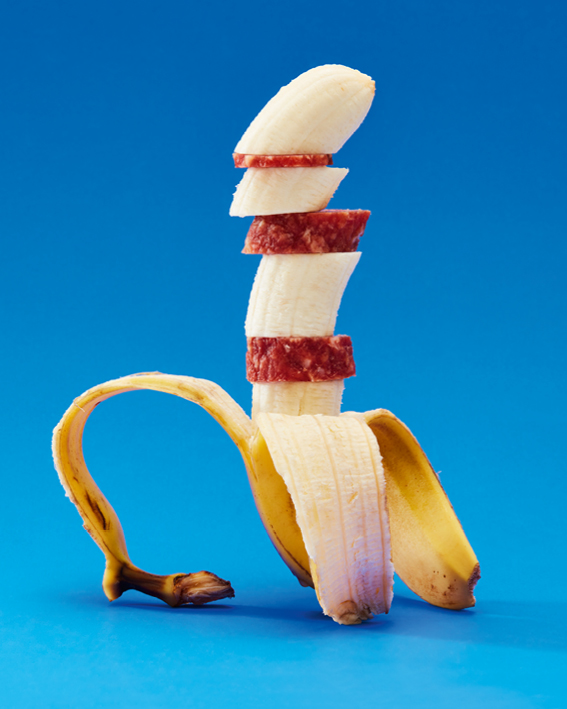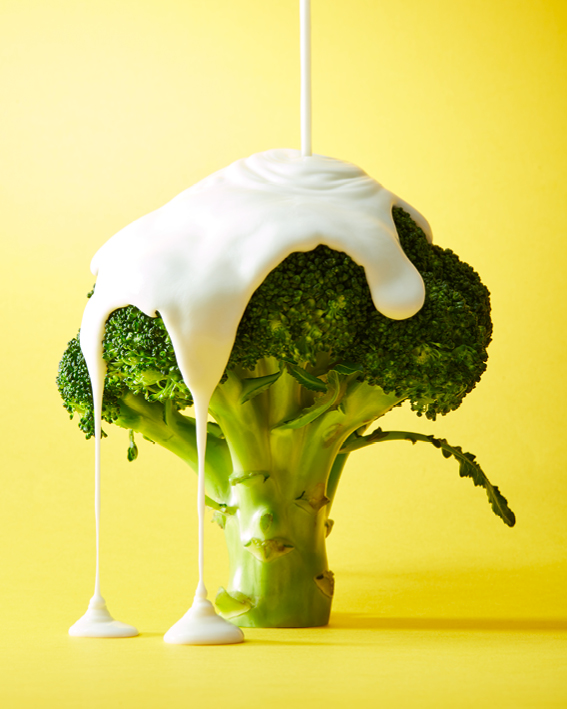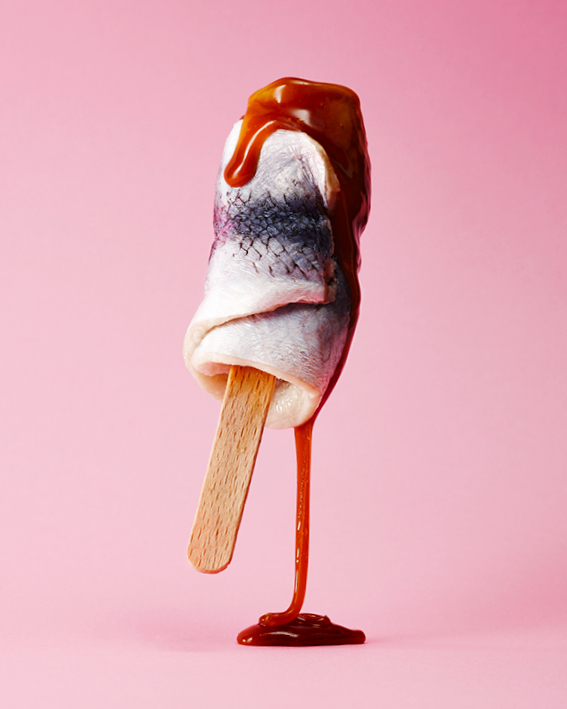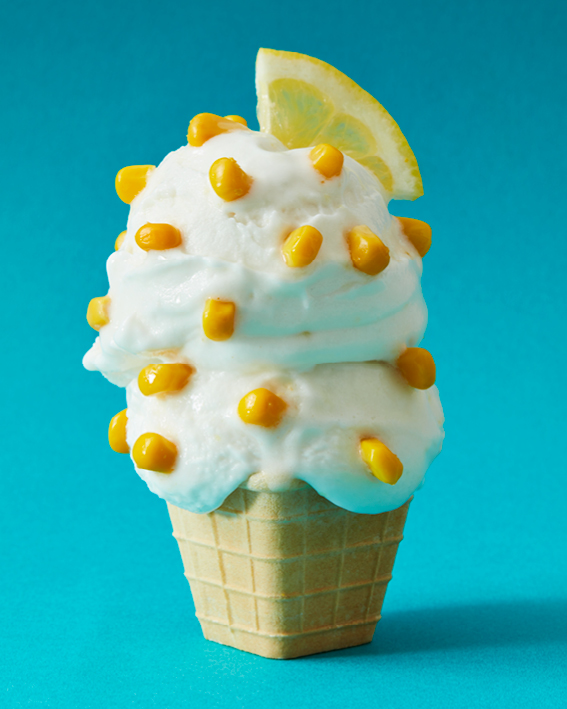
There’s a scene in Agnes Varda’s short film, Diary of a Pregnant Woman (1958), in which a woman plucks a bouquet of flowers and start to chomp on them with voracious, unrestrained delight. It surely resonates with any pregnant woman who has found herself eating her way through some bizarre culinary choices with wanton abandon. Some of the peculiar pregnancy cravings—pickles, chocolate, ice—are well mythologized, but have you heard of liquorice hotdogs, rollmop herring with salted caramel, prawns doused in peanut butter?
“The idea was to capture the dishes in a way that looks delicious”
In his new publication, The Pregnancy Cookbook, Dutch creative director Pascal Rotteveel invites you into the wonderfully varied and strangely specific world of pregnancy eating. The tropes of pregnancy eating are vividly and imaginatively reinvented here in fun, full-colour photographs (the recipes are brought to life by Rene Mesman and food stylist, Claartje Lindhout) so that even at their grossest they manage to look appetising. “The idea was to capture the dishes in a way that looks delicious—until you realize what it would taste like,” Rotteveel explains.

The idea for The Pregnancy Cookbook came to Rotteveel when his sister was pregnant with her first child. He became fascinated with her unusual desires and “as time went by and more friends and family were getting pregnant I got more and more exciting answers when I asked about their cravings”.
“At some point, I figured that these cravings deserved a place in the spotlight and should be captured in a book. I started to collect more recipes from friends, family and Internet desk research to find the most visually interesting cravings.” All of the recipes documented in the book are real things women have eaten. Through forty recipes—one for each week of a regular pregnancy—Rotteveel, Mesman and Lindout creatively conceptualize these genuine cravings, with jovial texts by Rotteveel who seems just as excited by the journey a pregnancy can take you on as an expectant mum.

As any woman who has been through it certainly understands, pregnancy does something strange to your appetite—the food aversion, nausea and vomiting common in the first twelve weeks can soon be replaced with “eating for two” (or more). Your relationship to food can often be conflicted between the maternal instinct to feed your baby well and responding to the call for high calorie, high-fat comfort food that comes from the flux and flow in hormones shifting around your changing body.
“One evening I found myself demanding my boyfriend go and fetch hot dogs”
During my first pregnancy, I didn’t think I had had any cravings: I just thought I’d discovered sardines on toast, but since giving birth I haven’t been compelled to eat it again. In the first trimester of my second pregnancy, almost all food made my stomach heave, but especially fresh fruit and vegetables. And so, one evening I found myself demanding my boyfriend go and fetch hot dogs—“the processed kind, with cheap white sausage buns and onions”. Biologically, these desires don’t seem to make any sense, but it is biology, apparently, that causes them. It’s those hormones that, science hypotheses but hasn’t concluded, steer us towards foods we might never have even imagined ourselves consuming pre-pregnancy: leptin is secreted by your fat cells to stimulate metabolism while neuropeptide works to increase appetite.

Importantly, cravings among pregnant women can also indicate a deficiency—if it’s salt you’re pining for, it might be a lack of magnesium; dairy can mean you’re short on calcium. Drops in blood sugar and dopamine can also push you towards comfort eating: as captured brilliantly in Rotteveel’s book, in recipes like “Nutella Fingers”, peanut butter and jam sandwiches, a gummy bear crepe and simply, “a substantial amount of potatoes”. Some nutritionists believe that the impulse to eat certain foods can be a signal you’re in need of certain micronutrients—but does that explain why you only want to eat one flavour of Ben & Jerry’s? Then again, all those fatty foods might be contributing towards building a baby brain—after all, our human thinking gland is 60 per cent fat.

There is also a rare but acute condition called pica that some pregnant people can develop—a craving for non-nutritional substances like dirt, hair or paper. The Pregnancy Cookbook warns about this in a light-hearted way, with a recipe for “Drywall Delux”—if a cone of chalk and plaster looks good to you, the author advises, “get in touch with a doctor or pregnancy professional”.
There’s another subtle musing going on in Rotteveel’s Pregnancy Cookbook; over the course of its pages, you realize just how much pregnancy changes your day to day life—it’s not only about the way you see food, but the way you see the world.





